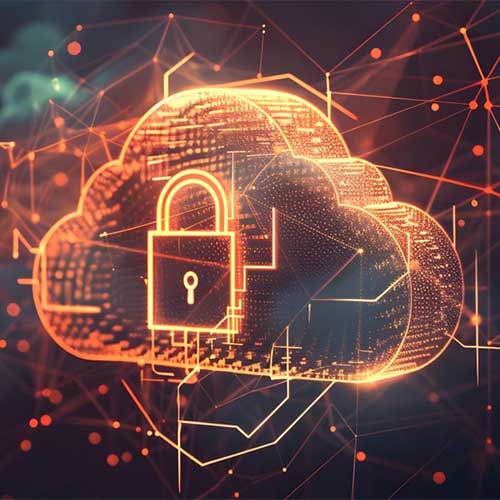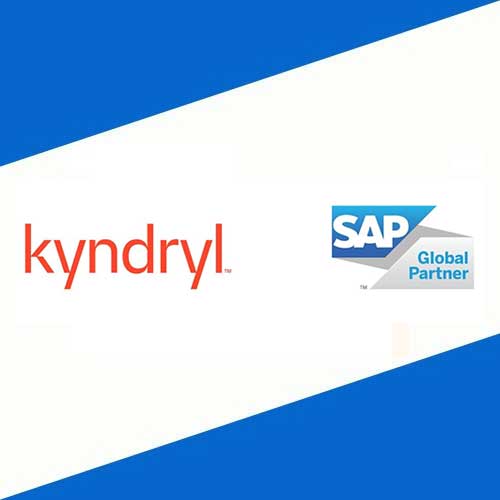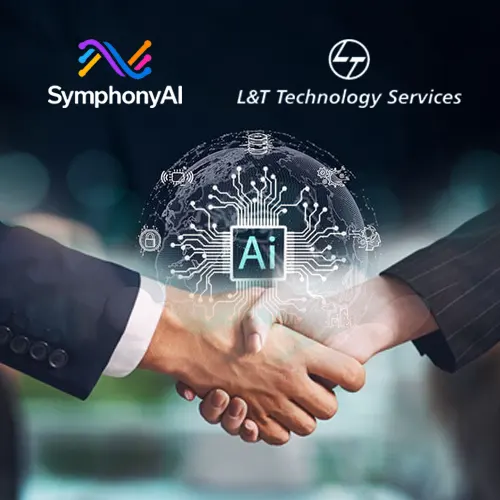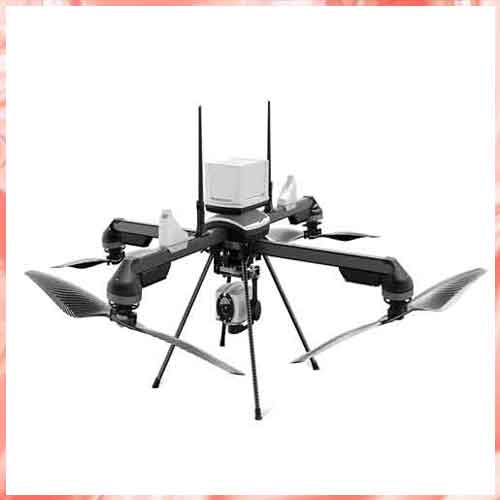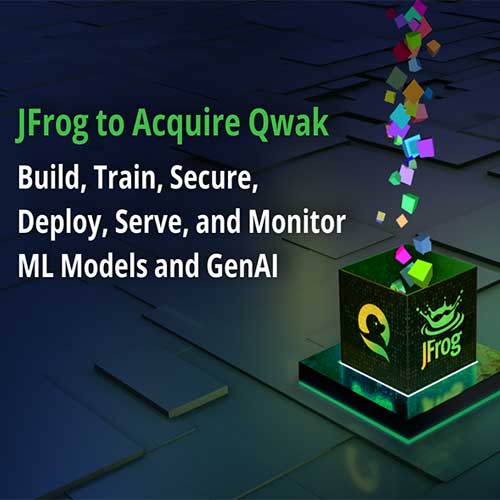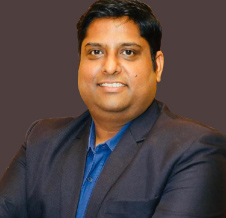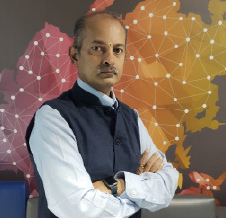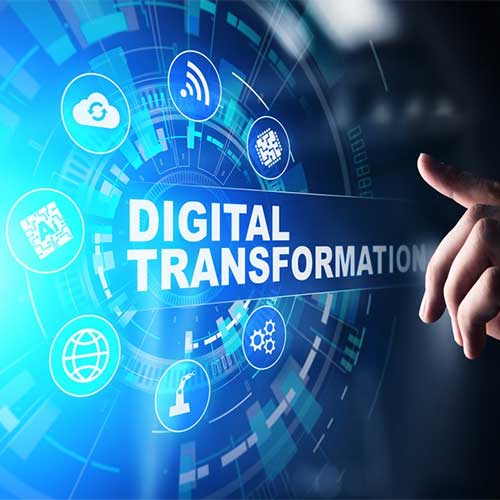
Digital will be the way ahead in 2017 and will be the latest buzzword in the country. Organizations in 2017 are going to spend a considerable amount of time and energy on understanding what they need to be doing to accelerate their digital business.
2016 has been eventful year from every aspect. While prominent instances like Brexit, US presidential elections etc. have had a defining impact on the world, on the local turf, the recent demonetization move took the market by surprise. Demonetization did impact the country’s economic growth significantly in the short term, but in the long run it is expected to define the economic development of the country in a calculated manner and keep the momentum going for programs like Make in India and Digital India Mission.

Nevertheless, while trying to come to terms with the recent market developments, companies at the same time are also trying to comprehend what digital transformation really is.
Talking about the technology predictions for 2017, apart from digital transformation, artificial intelligence, IoT, SMAC, hyper cloud model are some of the key trends that will continue to shape the technology and business landscape in India.
IoT/ Artificial Intelligence
Internet of Things (IoT) will offer huge business prospect for telecom players in future. It is witnessing a huge traction in surveillance, vehicle tracking, home automation etc. But as per Sajan Paul, Director of Systems Engineering & CTO at Juniper Networks in India and SAARC, in IoT security is the biggest concern. He is of the opinion that though the adoption of IoT is in nascent stage, technology companies should strengthen its solutions from the security point of view. “The Internet of Things (IoT) is a unique domain that offers tremendous business opportunities for telecom players in the years to come. The total revenue generated from IoT industry would be USD 300 billion and India would have a share of 5-6% of the global IoT industry. We see consumer domain having the maximum uptake.”

IOT adoption and cloud will face newer threats aimed at exploiting the vulnerabilities in the systems, like the large-scale DDoS attack conducted last year through Mirai worm. There are however a few turnkey orchestration tools to successfully manage IoT security. For IoT to survive and live up to what it promises, it is vital that technology companies master security and unlock the possibilities of integration. “The real “winners” are going to be companies who can code their own solutions to ensure their products are secure,” says Sajan Paul, Director of Systems Engineering & CTO at Juniper Networks in India and SAARC.
According to Harsh Marwah, Country Manager, Verizon Enterprise Solutions India, “The IoT focus will not be on the ‘thing’, but on its potential for transformation. It’s all about how IoT drives supply chain convergence, transforms processes and revolutionizes operating models - the practical application, not the theory. This means looking at what can be achieved through multidimensional data analytics. If you’re focused solely on location, catch up to 2017.”
Snehashish Bhattacharjee, Global CEO & Co-Founder, Denave opines that the difference between virtual and real is decreasing rapidly. The revolutionary technology, Artificial Intelligence is picking up in a fast pace in the technology world. Cloud technology will also be gaining grounds.

“Artificial Intelligence is already revolutionizing the industry in a major way and this trend will see nothing but an exponential upward swing in the coming year. We can certainly anticipate machines replacing human intervention in the service sector to start with, followed by more such developments in the manufacturing segment. Cloud convergence will also further drive the industrial momentum and build huge economies of scale replacing highly repetitive human interventions,” views Snehashish Bhattacharjee.
Artificial Intelligence has made huge progress in the past few years but human assistance is required in larger scheme of things and Hybrid Intelligence will play an important role. It helps to understand the information and improves productivity of both computers and humans.
“Artificial Intelligence has grown by leaps and bounds in the last few years; the human element however still plays a crucial role in the larger scheme of things, and this is where Hybrid Intelligence will play a crucial role. What Hybrid Intelligence will essentially do is help us make more sense of all the information we gather and make meaningful connections, which is the essence of creativity and productivity,” explains Parag Arora, Area Vice President & Country Head - India Subcontinent, Citrix.

On Artificial Intelligence Vishal Dhupar, Managing Director, NVIDIA – South Asia says, “The Intelligent Industrial Revolution is here, thanks to a powerful new form of AI called GPU-accelerated deep learning. This approach has brought AI out of the realms of science fiction and into our daily lives. The power of deep learning to solve some of the world’s most critical and complex challenges is being proven on a daily basis as organizations at every level, from start-ups to large enterprise, begin to realize its potential. Innovations are moving forward at a rapid pace globally as well as in India.”

PC/ Laptop/ Tablets
It is expected that in the year 2017, the PC industry will witness some developments as adoption of hybrid computers are prominent. These computers can be used as consumption as well as productive devices. Acer has witnessed the consumer trend moving towards convertibles and the company offers a wide range of products in this category.
“2017 seems a year full of many interesting developments, especially for the PC industry. We are seeing a large adoption of hybrid computers. This laptop will compete both in the PC market as well as the portable device market thereby expanding the potential market and sales figures. We can also look forward to VR (Virtual Reality) taking more prominence with entertainment industry,” predicts Chandrahas Panigrahi, Sr. Director and Consumer Business Head, Acer India.
Reiterating similar views, Rajesh Thadani, Head Executive Director Consumer Online and E-commerce Lenovo India said, “2017 will undoubtedly see an abundance of convertible and detachable devices in the market as portability and versatility remain on top of mind of PC users who are becoming more mobile at work and at home.”

In the commercial space, analysts forecast PC-as-a-Service (PCaaS) will help PC vendors transform transactional PC sales into longer-term and more profitable engagements by expanding their services portfolios bundled with PC sales. IDC also surveyed IT buyers across a range of company sizes about PCaaS and found that almost half of respondents said they engaged in the past 12 months or are considering engaging in the next 12 months in PCaaS. This means IT decision makers are positioned to drive and grow the PC market with customized add-on services to maintain and extend the lifecycle of the device.
Cyber Security
Demonetization has impacted India not only economically but also digitally. The economic move has triggered the growth of mobile wallets. But this has also prompted fraudulent misuse of payment networks and theft of data. It is becoming increasingly important to identify the risks associated with it.

“Post demonetization, while the uses of online payment platforms have gone up, the fraudulent misuse of payment networks and data theft has grown. In the given scenario, the foremost of all threats is identity. Considering the recent breach incidences with 3.2 million Debit Cards being compromised, it is important to know every customer, partners, their customers and most importantly your own employees. Furthermore, the security provisions and applications still remain the same. While people are getting comfortable with mobile wallets and banking through apps and smartphones, Wi-Fi networks continue to have major security flaws that can make it very dangerous to conduct transactions using mobile device,” advises Amit Nath, Head of Asia Pacific (Corporate Business) - F-Secure.

Rajat Mohanty CEO and Co-Founder, Paladion Networks also predicts similar threats. According to him the cashless payments system will be targeted due to lack of awareness among the users. Moreover he also says that the SME sector can be an easy target due to inadequate security implementations. He adds that new threats like DDoS attacks can be witnessed in IoT and Cloud technology. Another major security trend that he has mentioned is the upcoming centralized response platforms in Security Operation Centres (SOCs).
“Demonetization has led to a massive influx of cashless payments systems, but there is little awareness amongst most users about these tools. This gap is what cyber criminals will seek to exploit through social engineering attacks such as phishing, rogue apps, email frauds, identity thefts, and confidence tricks. Large-scale tech adoption across industries also means that cyber criminals might shift their focus to the SME sector, which is easier to breach owing to a lack of proper security implementation,” says Rajat Mohanty CEO and Co-Founder for Paladion Networks.

As the number of connected devices is increasing, these devices will become targets of cyber criminals. The endpoint devices act as an entry to the potential threats and so these devices need to be secured.
“Market research firm Gartner predicts that the number of connected ‘things’ will rise from 6.5 billion in 2015 to almost 21 billion by 2020. However, connected devices will also be a target for cybercrime, even more so because people place enormous trust in third-party vendors being safe. In 2016, we saw the first real challenges appear where compromised devices were connected together in a botnet to launch attacks against banks and key parts of the internet infrastructure. Committed cybercriminals will use every trick in the book and be creative in trying to access the information they want, and look at what ways they can gain entry,” says Sean Duca, Vice President and Regional Chief Security Officer, Asia Pacific, Palo Alto Networks.

Tarun Kaura, Director - Solutions Product Management - APJ, Symantec says, “We will continue to see a shift toward the modern workplace as businesses allow employees to introduce new technologies such as wearables, virtual reality and IoT connected devices onto the network while supporting a rapidly dispersed workforce made possible by cloud applications and solutions. Enterprises will need to shift their focus from safeguarding endpoint devices toward protecting users and information across all applications and services.”
Talking about cyber security, Sunil Sharma, Vice President, Sales, Sophos India and SAARC views, “Security has been high on radar for CIOs. Unfortunately, many organizations still don’t have their security basics right and are extremely vulnerable for cyberattacks. There are six key measures that organizations should put in place to help keep more complex threats at bay-
a) Move from layered to integrated security
b) Deploying next-generation endpoint protection
c) Prioritizing risk-based security
d) Automating the basics
e) Building staff and process to deter and mitigate social attacks and
f) Improving defender coordination.”
According to Altaf Halde, Managing Director Kaspersky Lab South Asia the top five threats will be APT (Advanced Protection Threats), Ephemeral Infections, Espionage going mobile, Resilient payment systems and lying ransomware.
“As much as we all hate ransomware (and with good reason), most ransomware thrives on the benefit of an unlikely trust relationship between the victim and their attacker. This criminal ecosystem relies on the tenet that the attacker will abide by a tacit contract with the victim that once payment is received, the ransomed files will be returned. Cybercriminals have exhibited a surprising semblance of professionalism in fulfilling this promise and this has allowed the ecosystem to thrive. However, as the popularity continues to rise and a lesser grade of criminal decides to enter the space, we are likely to encounter more and more ‘ransomware’ that lacks the quality assurance or general coding capability to actually uphold this promise,” predicts Altaf.
To counter cyber crime only security of devices does not meet the requirement. An integrated security from IoT to Cloud is needed to defend the threats.
“Customers need integrated security, from IoT to the cloud, with actionable analytics across their multi-vendor networking and security solutions. Fortinet’s commitment to an open, integrated Security Fabric, allows customers the flexibility to deploy Fortinet solutions alongside their existing or new security technologies for truly integrated protection,” states Rajesh Maurya, Regional Director, India & SAARC, Fortinet.
Surveillance/ Video Analytics
The Previous year has witnessed an increase in the number of HD cameras and this year it is expected that panoramas, higher resolutions, sensors will be trending. More shift from analog to HD cameras will be observed along with capabilities like compression, streaming, storage, and analytics.
“2016 saw a surge in camera counts - especially HD cameras yielding considerably more data to manage. In 2017 we expect the adoption of cameras with wider panoramas, higher resolutions, and more sensors will accelerate. Watch for more installations to transition from analog and HD cameras, with a demand that more surveillance capabilities – compression, streaming, storage, and analytics – be bundled into cameras for greater value. The influx of data will strain storage and make an intelligent, multi-tier storage strategy more vital than before. With improved intelligence in cameras, storage management software will effectively manage the influx of data will become even more important,” observes Wayne Arvaindson, Vice President of Video Surveillance and Security Solutions - Quantum.
According to Johan Paulsson, CTO, Axis Communications, customers who are unable to manage complex systems will adopt security as a service. “As many other technologies have done, we expect customers will stop looking at physical security as simply being a collection of hardware and software connected to a network. Instead, we think they will start to see their security as a service – remote and professionally hosting and monitoring of video transmitted from the customer’s premise. Whether by themselves, or more likely by sector-specific specialists who can not only take away the burden of managing the complex systems involved, but also reduce the costs of keeping those systems up to date and secure.”
With the growing popularity of Smart devices it is expected that cameras will be integrated into every devices. Moreover, IP Cameras, Analytics, multisite video surveillance will also be trending in this year. Talking about the present market condition, Balasubramanian Jayam, Head, Marketing Communications, Hikvision sys that the market is favourable for quality products and the government initiatives has widened the opportunities for security industry further.
“Smart devices are fast becoming integrated in our businesses and lives. Wearables will go beyond wrist. Cameras will be built into almost everything. Mobile applications will be much sought after. Robotics will play a crucial role. Integrated solutions, IP Cameras, Analytics, multisite video surveillance and increased office and home automation will feature in 2017.
There is indeed a lot of scope for the security industry in India in the coming years,” explains Balasubramanian.
With the emergence of Internet of Things (IoT) the periphery of security application has been widened. Connected homes and cars, unmanned devices, multiple mobile applications etc are impacting the growth of traditional security.
“In the world of The Internet of Things (IoT), IP surveillance cameras should be able to connect and interact with IoT devices. The boundary of security applications has been broken by the Internet of Things (IoT) technologies. The demand for multiple mobile applications, connected homes and cars, and unmanned devices, like drones and robots, is also influencing the development of ‘traditional’ security products and technologies. So thinking out of box to provide solutions for verticals/applications and also for purposes beyond security, is important,” states Sanjeev Gulati, Country Manager-India & SAARC, VIVOTEK.
SMAC
In 2016 it has been observed that businesses have now started looking for real-time analysis of the data to understand customer needs & buying trends, external changes and much more. Data analytics is helping businesses to get better insights on customers, buying trends etc. The trend will continue in 2017 as well.
“Business needs arising out of SMAC (social, mobile, analytics and cloud) will drive customer buying behavior in 2017,” says Vikram Mulye, Head, Enterprise Business Group, Lenovo India. “To gain better business insights, organizations need to manage the volume, variety, and velocity of data, while applying analytics. Analytics is helping businesses in getting opportunities, partners and suitable customers. Whether your business supports a high-performance data centre or a small office with limited IT resources, analytics solutions will help your organization to align and integrate processes, communicate with employees, partners, suppliers, and customers in new ways, improve efficiency, and fully use your IT investment to increase the value of your business. We also see a trend of customers moving towards a hybrid cloud wherein customers balance their workloads across a private cloud and a public cloud,” he says.
Reiterating similar views Virender Jeet - Sr. VP Technology at Newgen Software says, “SMAC technologies are currently driving business innovation by creating an ecosystem that allows a business to improve its operations and get closer to the customer. Businesses can now leverage the best of traditional Business Process management (BPM) offerings in combination with cutting-edge, emerging technologies such as Social, Mobility, Analytics, Cloud (SMAC) to attain speed and agility. Case Management Framework built on top of BPM offerings allow you to build customer centric processes and gain a distinct competitive advantage.”
Software Defined (Networking/ Storage)
Adoption of Cloud technology will not eradicate the traditional storage system. In 2017 the new technology called Software Defined Storage will help businesses to arrange and combine cloud and on-premises strategies.
“Accelerating towards the cloud does not mean that businesses’ storage needs will disappear. Companies will need to be able to manage storage holistically based on real business needs, such as uptime, cost and responsiveness. In 2017, as organizations look for more turnkey-style solutions for managing storage across their hardware, a new generation of software-defined storage will help them align and merge their cloud and on-premises strategies,” predicts Balaji Rao, Managing Director, Veritas, India.
Another technology Software Defined Network will rule the technology space. The adoption of this technology will increase beyond early adopters and enterprises and private datacenters will reap value from this technology.
“2017 is expected to see complete software-defined network infrastructure solutions that are commercially available, multi-vendor, based on a viable ecosystem of SDN and NFV components. Proprietary platforms will begin to feel uncomfortably closed as users realize the extent of their lock-in. And adoption will rise, beyond the early adopter service providers, as enterprises and private datacenters begin to see a manageable path to achieve the value of a flexible infrastructure,” adds George Chacko, Principal Systems Engineer & Lead Technical Consultant, Brocade India.
According to Sundar Balasubramanian, Senior Director, General Business (Commercial Sales & Partners) VMware, “In the history of networking and security, we are on the verge of something special – a major change in how we interconnect and secure workloads. True SDN, such as VMware NSX, will be utilized by thousands of companies in 2017 to take their network and security operations enormous leaps ahead. Complete network stack which include load balancing and security will be organized in minutes and managed across several data centres and clouds. Applications will realize security granularity corresponding to each application having a dedicated data centre. This solution will also form the base for end-to-end network encryption.”
Digital India
The new government initiatives uphold the digital growth in India which has created an array of opportunities for the companies. The Government is playing a major role in driving internet growth in the country through initiatives like ‘Digital India’, ‘Smart City’ and ‘Make in India’. And this opens up huge opportunities for different companies.
“India is a significant market for us; we see immense opportunity for growth here as India goes through a momentous digital change. We have an apt model in place and we believe that our growth (in India) will continue to rise. It is expected that by end of this year, 90 percent of companies will be competing on “Customer Experience”. We can clearly see that customer experience is driving every major business decision for most enterprises, and for good reason,” says Vishal Agrawal, Managing Director (India and SAARC), Avaya India.
The initiative of going digital by the Indian government has pushed the growth of the networking market. Many state governments have come up with various plans which is further boosting the networking growth.
“One good thing is that now there is a lot of government push towards digitization and the growth of a networking market is a part of this push. Several state governments have rolled out various plans. 4G is coming up in a big way with Airtel and Reliance and such roll outs have given a push to the networking market. On the enterprise networking front, I see growth in wireless controllers and that is mainly because there is a lot of requirement of wireless hotspots,” asserts Mandar Joshi, Head - Channel Business, DIGISOL Systems Ltd.
Dimension Data’s Chief Technology Officer, Ettienne Reinecke said, “Digital is about building truly customer-centric business models on IT including the network, data centre, applications, and other infrastructure - which may be on-premise, or cloud-based. Today, there’s no such thing as a digital strategy – just strategy in a digital world. And while the digital age is creating a degree of uncertainty for some organizations, it is also opening the doors to exciting possibilities and ushering in an era of infinite potential.”
While talking about Digital India and its opportunities, Dr. Keshab Panda, MD& CEO, L&T Technology Services says, “Digital Engineering will be our key offering for the market of new technologies in 2017. Our Digital Engineering portfolio includes as i-BEMS our energy management solution for smart buildings and our UBIQWeise platform that connects disparate devices and helps move data securely to the cloud.”
Storage
As the demand for computing devices, smartphones, tablets etc is growing, it is expected that the demand for storage devices for transferring data will grow simultaneously. With the massive technology disruption, the storage industry is expected to mature more than ever in the near future.
“Storage devices are all about improving performance and efficiency. We can improve every aspect of the customer experience by ultimately transforming the speed and performance of the products. The increased dependence on smartphones and higher rate of content creation and consumption, provides a massive opportunity for our brand as we have a product portfolio called - Mobile Memory Solutions (MMS) suite which has been specially designed keeping in mind storage issues faced by consumers,” says Rajesh Gupta, Country Manager of SanDisk India and SAARC Retail Sales and Marketing, Western Digital Corporation.
In the Enterprise segment, companies look for faster delivery of data storage solutions and All-Flash storage solutions offer them better efficiency than traditional storage.
“Enterprises are looking for fast delivery data storage solutions to meet their data management demands. All-Flash Solutions offers them greater efficiency compared to traditional HDD storage. They can scale-out the solutions depending on their needs and demands,” mentions Anil Valluri, President NetApp India & SAARC, India Predictions.
Mobility
Though globally the sale of smartphones has slowed down, India has still posted a growth of 23% year-on-year. The increase in the 4G penetration will further augment in the rise of smartphone users.
“Despite India’s population of 1.25 billion, barely 250 million use smartphones, signifying the market’s tremendous growth potential. As 4G LTE penetration rises, India could have 500 million smartphone users in the next five years. Indeed, in Q1 2016, more than 45% of mobiles shipped were smartphones, with two-thirds being LTE-capable devices,” points out Narender Bansal, Chairman and Managing Director, Intex Technologies (India) Ltd.
It is believed by Zen Mobiles that Tier II and III cities will play a major role in boosting the digital transformation which acts as a catalyst in smartphone adoption.
“We believe, Tier II and Tier III cities will play a major role in accepting the digital transformation thus fueling smartphone sales. With the introduction of our 4G VoLTE devices in the market, we aim to help in digitizing Indian consumers across. So far, our major focus has been on feature phones market but affordable 4G devices will be a game changer catering to the unwavering spirit of today’s youth, what we call is ZENERATION 4G,” believes Sanjay Kalirona, CEO, Zen Mobile.
India is one of the largest smartphone markets and a phone that offers maximum convenience to the users will see huge demand. Ziox has plans to come up with 4G budget smartphones to compete in the market.
“India is set to become the second largest smartphone market in the coming year and multitasking will be the need of the hour. Phones that offer maximum convenience to the users while making no comprise on speed will be in higher demand. As far as, Ziox is concerned we have already laid out a strategic plan to introduce 4G Smartphones within the price range of 6K,” says Deepak Kabu, CEO, Ziox Mobiles.
Printing
For Epson, retail, SOHO, healthcare etc. has earned a good number and the company is optimistic that this trend will last and the upcountry markets will also see growth. Moreover, digital printing which is replacing analog printing is slowly gaining ground.
“India is currently in the growth phase with an immense potential across markets. A lot of markets are not tapped to their full potential and 2017 will open doors for more business. Over the last few years Epson has witnessed a steady growth. We believe this trend will continue and upcountry market will see better growth over developed cities in India. Traditional analog printing in industrial printing markets such as textiles, labels and signage are also being rapidly replaced by digital printing and gaining in importance and will see a lot of traction in the year 2017. Increased use of mobile applications could trigger also demand in portable POS printer,” explained Samba Moorthy, Vice President, Sales & Marketing, Epson India.
Speaking on Digital Printing Balaji Rajagopalan, Executive Director- Technology, Channels & International Distributor Operations, Xerox India says, “The digital printing industry is seeing significant transformation with new technologies & innovative applications providing cost-effective and customized solutions. The office printing segment will continue to grow and there will be an increased demand of MFPs as companies look for innovative solutions to simplify business processes. We shall continue to see accelerated movement towards more integrated work flow solutions.”
Konica Minolta is looking forward to offer software solutions in 2017 which will help customers to lowers their printing expenses and increase productivity.
“We are looking more into the software solutions; till date what we have done is more of hardware. But now we are looking to offer the software solutions which enable the customers to increase their productivity and minimize their expenses in printing. Similarly for production also, we are coming out with print management, color management and Web to print solutions. So both in the office as well as printing we are working on the solutions workflows,” says Kuldeep Malhotra, Vice President (Sales Division) - Konica Minolta.
Infrastructure Automation
Most companies involved in the development of infrastructure offerings and tools have built solutions that are unnecessarily complex. In 2017, infrastructure automation is going to become more relevant as DevOps will continue to become more simplified.
“Businesses would increasingly adopt solutions that are simple, performant and cost effective - enabling their teams to quickly build, test and deploy their innovative applications and products," says Prabhakar Jayakumar, India Country Manager, DigitalOcean.
We’ve seen the channel have to make adjustments over the years anytime end-user IT purchasing and deployment decisions change course, and the age of the cloud is no different. Moving forward in 2017 we’re going to see traditional VARs have to adjust the way they approach customers in everything from the conversations they’re having to the solutions they sell and support. We’re already beginning to see customers pass over their traditional solution providers and go about tackling small cloud projects alone, which will only result in customers looking elsewhere for help with larger cloud projects. 2017 will be a defining year for the channel in that those who adapt and are able provide added value to cloud deployments for customers with expertise in areas like cloud security, will be able to move forward and work effectively with their customers as more data and applications move off premises.
And so...
Going by the trends of different technologies, 2017 sounds to be a great year. It is predicted that we will go beyond talking about digital transformation to having a real dialogue about what organizations actually need to be doing to evolve, survive and thrive in the era of the Digital Industry.
Talking about the channel industry, the year has in store lot of promises for them too. Traditional VARs are considering to adjust the way they approach customers in everything from the conversations they are having to the solutions they sell and support. “We are already beginning to see customers pass over their traditional solution providers and go about tackling small cloud projects alone, which will only result in customers looking elsewhere for help with larger cloud projects. 2017 will be a defining year for the channel in that those who adapt and are able to provide added value to cloud deployments for customers with expertise in areas like cloud security, will be able to move forward and work effectively with their customers as more data and applications move off premises,” explains Ezra Hookano, VP Channels, Barracuda.
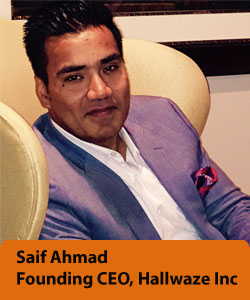 Saif Ahmad, Founding CEO, Hallwaze Inc.
Saif Ahmad, Founding CEO, Hallwaze Inc.
AI and Machine Learning will continue to dominate the 2017. Contextually Intelligent algorithms will exponentially change the experience for both workers and consumers. Machine learning will allow better recommendations in almost all applications. ML will be the new normal.
Second, AR and VR will see a huge upside this year. Pokemon-Go is a testimony to that. The AR-VR will provide better in store experience to consumers. Market opportunity is huge in this.
Third will be the IOT and Home Security. Urban population will be a great market for IoT based smart consumer electronics. Urban homes will be more secured with smart home security systems.
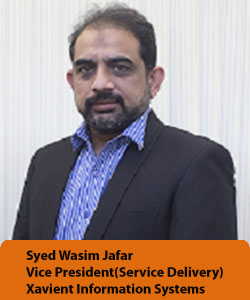 Syed Wasim Jafar, Vice President(Service Delivery), Xavient Information Systems
Syed Wasim Jafar, Vice President(Service Delivery), Xavient Information Systems
As per the 2017 forecasts released lately, more and more organizations will continue to adopt Hadoop. With Hadoop in place, data structuring will be simplified and organizations will be able to crunch large volumes of data with advanced analytics.
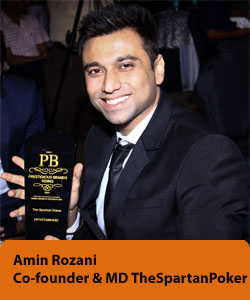 Amin Rozani Co-founder & MD TheSpartanPoker
Amin Rozani Co-founder & MD TheSpartanPoker
The year 2017 is expected to have an intense poker action. Poker as a sport will receive a wider acceptance and new online players will keep mushrooming in the industry. For Poker industry year on year growth trajectory will continue and is expected to grow by 300% this year. 2017 is expected to further strengthen the legitimacy of poker as a sport. Many metros such as Bangalore, Kolkata and Ahmedabad have now embraced online poker to an extent that opening of new poker clubs are expected every month. This year will see some on ground (live) poker leagues like PSL (Poker sports league); if this league does well then similar leagues will take place in the near future; thus hallmarking poker as a mainstream sport. Online games being equal opportunity sports – can expect more women to participate. And with demonetization coming into picture, technology and online gaming industry will witness a boost this new year.
According to Sunil Kumar Thakur, Country Manager - India, BMC Software, this era is being fuelled by three core elements that act as accelerators for Digital Industry – “firstly, a culture of high speed innovation which is underpinned by both modern infrastructure and digital-enabled employees. Secondly, organizations across all industries will know how to leverage the power of digital technologies to create new and disruptive business models. And lastly, only those businesses who embrace a new mindset to protect and preserve their existing infrastructure while investing in new digital technologies will reshape markets, deliver apps and services at hyper scale and become the leaders of the new digital industry,” he sums up.
As per, Sunil Manglore, Managing Director, India at CA Technologies, “2017 will have more and more businesses that will start using Software and digital technologies to transform the way they interact with their customers.
* Customer loyalty will be determined by the experience that customers have with the company’s app.
* Businesses will increasingly adopt analytics to respond to customer feedback on a real-time basis.
* As the time available to companies to respond to changes in the environment keeps getting compressed Devops and Agile methodologies will gain importance.”
The industry is quite optimistic about 2017 and everyone believes that this will be a year of technology spelling a stupendous industrial growth, not only for sales but for entire gamut of trade practices.
Samrita Baruah
samrita@varindia.com
Aparna Mullick
aparna@varindia.com
See What’s Next in Tech With the Fast Forward Newsletter
Tweets From @varindiamag
Nothing to see here - yet
When they Tweet, their Tweets will show up here.







